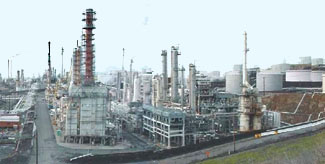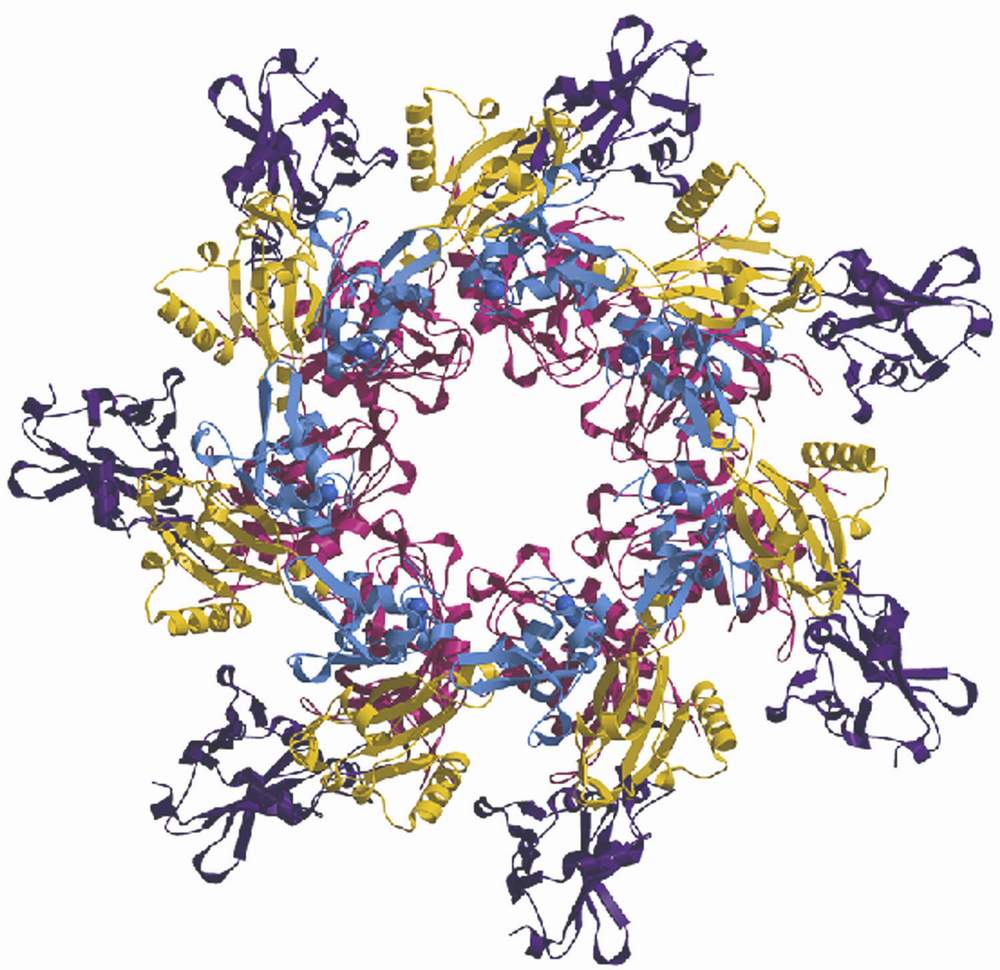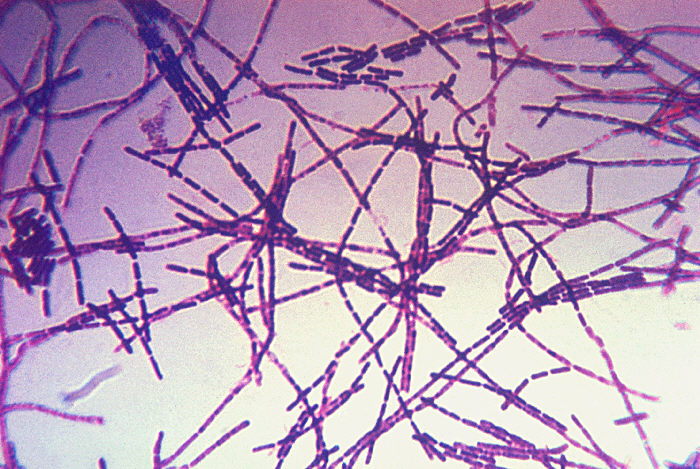Bacillus anthracis: Difference between revisions
imported>Kahtan M Alsaedi |
imported>Kahtan M Alsaedi |
||
| Line 20: | Line 20: | ||
===Species=== | ===Species=== | ||
[[Image: | [[Image:AnthraxBacteria.jpg]] | ||
Revision as of 08:26, 29 March 2008
Articles that lack this notice, including many Eduzendium ones, welcome your collaboration! |
Classification
Higher order taxa
Kingdom-Bacteria
Phylum-Firmicutes
Class-Bacilli
Order-Bacillales
Family-Bacillaceae
Species
Genus-Bacillus
Species-B. anthracis
Description and significance
Describe the appearance, habitat, etc. of the organism, and why it is important enough to have its genome sequenced. Describe how and where it was isolated. Include a picture or two (with sources) if you can find them.
Responsible for causing anthrax, Bacillus anthracis is a large, rod shaped bacterium. Under ideal conditions, Bacillus anthracis organisms are surrounded by a gel-like covering called a capsule. Its this coating that protects it from the immune systems of a host animal. Anthrax organisms usually range in size from about 1 to 1.5 microns in width and about 3 to 10 microns in length.
Life cycle of Bacillus anthracis
Exposure to harsh conditions such as the death and decompositon of a host results in the anthrax bacteria forming spores. The process of spore formation is dependent on oxygen and thus does not occur in intact corpse. Once spores are formed they are highly resistant to drought, heat, cold, disinfectant, and other unfavorable surroundings. The high restivity of spores is due to hardy, thick-walled, oval bodies that have an average diameter of about 1-3 microns. Its these characteristics that allow spores to lie dormant in natural envirnoments for hundreds of years. The life cycle continues Once the spores are taken up by an animal which then allows them to transform back into rod-shaped bacteria. The bacteria then begin to mutiply and spread through the creature's body. Overtime huge population of germs develop and produce toxin, thus resulting in the host's death, and refomation into spores.
Types of Anthrax
There are four types of anthrax that are seen in animals: peracute anthrax, acute anthrax, subacute anthrax, and chronic anthrax. The four types differ in the appearance of symptoms and death. With peracute anthrax being the deadliest killing its host in a few hours, while Acute anthrax normally takes one to two days from the onset of symptoms to death. Subacute anthrax lasts from three to five days, while Chronic anthrax usually last more than five days. It has been shown that some animals can recover from the Chronic form of the disease.
Interesting facts about Bacillus anthracis
It was one of the organisms used for the development of the "Koch postulates". It's importance stems from being able to be isolated in pure culture.
It was the first bacterium to be used for the preparation of a vaccine based on attenuated bacteria by Louis Pasteur in 1881.
At one point scientist distinguished B.anthracis from B.cereus and B.thuringiensis by the presence of pXO1 and pXO2 plasmids. Recent studies however show the "genetic backbone" of both plasmids are not restricted to B.anthracis but can be found in related isolates of B.cereus and B.thuringiensis. These new finding thus raises another delimma of whether anthrax is caused by Bacillus anthracis or its a combination of more than one bacteria.
Genome structure
Describe the size and content of the genome. How many chromosomes? Circular or linear? Other interesting features? What is known about its sequence? Does it have any plasmids? Are they important to the organism's lifestyle?
Consisting of a single chromosome, Bacillus anthracis genome is circular and contains approximatley five million base pairs. The virulent factors that are associated with Bacillus anthracis are found on two plasmids pXO1 and pXO2. The plasmids are circular, double stranded DNA molecule, and extrachromosomal. The toxin itself is composed of three plasmid encoded protein. Two of the three proteins are directly toxic, and they are Lethal Factor(LF), and Edema Factor(EF). Increase of LF and EF cause the destruction of white blood cells and the increase in levels of cAMP respectively. Increase in cAMP causes massive edema, thereby imparing energy and water balance. The presence of EF reduces immunity and thus the host becomes susceptible to infection. The third protein Protective Antigen(PA) by itself is not toxic. If the PA is inactivated the LF and EF will be harmless. The pXO2 plasmid is resposnible for the production of a capsuel.
Cell structure and metabolism
Describe any interesting features and/or cell structures; how it gains energy; what important molecules it produces.
In it's vegatitive state B. anthracies is a gram positive, therefore it contain extensive peptidoglycan layer, lipoteichoic acid, and crystalline cell surface protein (S-layers). What separates B. anthracies from other gram positive bacteria is that it does not conatin teichoic acid and the S-Layers are not glycosylated.
Composed of three polysaccharides: Galactose, N-acetylmannose and N-acetylglucosamine, the cell wall's main function is to anchor the S-layers.
During vegatitive state deprivation of certain nutrient result in endospore formation, which must occur in the presence of oxygen.
When in an aqueous environment, spores germinate and grow.
Has antibacterial killing mechanisms such as hydrogen peroxide formation, defensin synthesis, superoxide dismutase(SOD).
Ecology
Describe any interactions with other organisms (included eukaryotes), contributions to the environment, effect on environment, etc.
Nearly all warm-blooded animals are vulnerable to anthrax. Some of anthrax victims are herbivores especially grazing animals such as cattle and sheep. Anthrax is also seen in demosticated animals such as horses, mules, goats and camels. Anthrax is not limited to just domesticated animals, its also seen in wild animals. On the other hand colded animals are not affected by anthrax at all. The reason for this is because Bacillus anthracis bacteria grows best at temperatures ranging from 77F to 104F. Animals whose body temperature does not fall with in the range will be immune to anthrax. A good example of an animal whose body temperature is above the permissible range for Bacillus anthracis and is thus immune to anthrax is a bird.
Pathology
How does this organism cause disease? Human, animal, plant hosts? Virulence factors, as well as patient symptoms.
Anthrax can strike at any time, but the most frequent time period when many grazing animals usually get sick is during the dry summer months. Its this time period that available forage decreases. The spores will enter the animal body when it eats the grass along with its root. The coarse vegetation can cause small cuts and abrasions in the mouth, lungs, and intestine of a grazing animal allowing spores to enter the body.
Meat-eating creatures are also at risk of eating spores. They can contract anthrax from consuming sick prey or infected carcasses. Anthrax spores can also be trasmitted by insect bites, infected water, dust blown off anthrax infected soil, and commercial feed made from infected animal carcasses.
Once infection occurs, the incubation period is usually between 3 and 7 days. The course of illness varies with the form of the disease and the animal infected. Death from anthrax usually results from septicemia or blood poisoning which is caused by high levels of Bacillus anthracius organisms and the toxins they secrete. At the time of death, there are on average 10 million to 100 million Bacillus anthracis organisms per milliliter of blood. The presence of the large amount of toxins results in kidney failure, tissue damage, massive swelling, and shock. The shock results from the decline of body functions due to reduced blood circulation.
In the instance where an animal is able to survive an anthrax infection, it will become immune to the disease and thus can not be reinfected.
Current Research
Enter summaries of the most recent research here--at least three required
Fighting Anthrax with Flies
The toxcitiy of Anthrax is due to the secretion of three polypeptides: the Protective Antigen(PA), Lethal Factor(LF), and Edema Factor(EF). The PA is responsible for binding to the surface of target cells. This binding facilitates the relase of LF a metalloprotease that is shown to cleave six of seven Mitogen-Activated Protein Kinase Kinases (MAPKK's). The binding also facilitate the relase of EF a acalmodulin-dependent adenylate cyclase that convert ATP to cAMP. So inorder for the toxcity of anthrax to be felt by the organism, binding between receptors and PA must occur. Lack of binding, Anthrax effect won't be felt, and an organism will survive. Its this quality that Drosophila posses which allows them to survive. The lack of binding is due to the absence of genes that code for receptors in the genome. Regradless of this, Drosophila can be still used to study the effect of anthrax through direct expression of LF and EF. Directed expression allows for greater experimental control, flexibility, and specificity in manipulation of toxins actions invivo. The knowledge of LF and EF function in Drosophila, allows for the testing of known inhibitors and discovering of new drugs against anthrax toxin.
References
Giagtzoglou, N., Bellen, JH. "Fighting anthrax with Flies". Proceedings of the National Academy of Sciences (PNAS). 2006. Volume 103. no.9. p. 3013-3014



